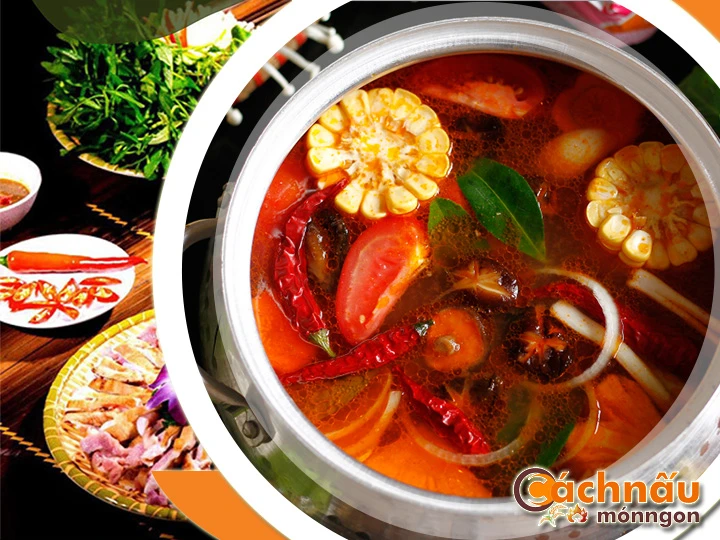Master the Delicious Rabbit Hot Pot Guide for Food Lovers - Lẩu thỏ
Master the Delicious Rabbit Hot Pot Guide for Food Lovers - Lẩu thỏ
Blog Article
Rabbit hot pot, a mouthwatering and traditional delicacy, has been adored across multiple cultures and locales for centuries.
This comprehensive guide explores all elements you need to know about rabbit hot pot, from its historical background to current adaptations, health-focused properties, and methodical instructions for creating the top-tier meal at home. Whether you are a professional cook or a amateur chef, this guide will inspire and equip you to excel in the technique of rabbit hot pot.

DIVING INTO THE CHRONICLES IN ADDITION TO HERITAGE REGARDING BUNNY CASSEROLE.
Rabbit hot pot is a distinctive and heritage-rich dish with rich cultural connections in many areas. Its demand stems not only from its hearty flavor but also from its historical and cultural significance.
1. Tracing the Origins relating to Hearty rabbit meal.
- Tracing Back: Hearty rabbit meal was first made in countryside where these animals were a popular, sustaining food source. In early Chinese history, it was a family favorite, particularly during holidays.
- Expansion Across Areas: In Western regions like Italy, rabbit was frequently added to soups, adapting into modern versions of rabbit casserole as the dish gained global appeal.
2. Hearty Rabbit Meal throughout Asian Traditions.
- In China: Known as the traditional rabbit hot pot, rabbit hot pot is a staple of Sichuan cuisine, well-known for its bold flavors and commonly shared during festive occasions.
- Throughout Korea and Japan: While less prevalent, rabbit hot pot is rarely created as a nutritional hot pot in the Korean Peninsula, or drawing influence from nabemono cuisine in traditional Japanese cooking, including local garden vegetables and flavoring ingredients.
- Across Vietnam: Although rabbit hot pot is not a regular meal, it is recognized during special occasions or in farming regions where rabbit meat is readily available. It is often flavored by distinctive spices such as aromatic lemongrass, aromatic ginger, and chili, paired with fresh vegetables like river spinach, mustard leaves, or mimosa vegetables. This dish is loved for its unique flavor and dietary value, frequently served at festive occasions with loved ones.
Tại Việt Nam, tuy không thuộc là món ăn phổ biến từng ngày, nhưng nổi bật trong những ngày quan trọng hoặc ở khu vực nông thôn, nơi dễ dàng tìm thấy thỏ. Thường được phối trộn cùng các loại gia vị như sả, gừng, và ớt tươi, kết hợp với rau sống khác. Món ăn này nổi bật trong các bữa tiệc nhờ vị ngon độc nhất và tính bổ dưỡng, thường các buổi gặp gỡ bạn bè.
3. Stewed Rabbit as part of European Culinary Traditions.
- In France: Traditionally served as a flavorful dish with wine reduction, aromatic herbs including rosemary, and classic root vegetables. Rabbit hot pot is a culinary staple for festive feasts.
- Across Italy: The dish named “Cacciatore”, featuring rabbit braised in tomatoes and wine, is a inspiration for hot pot recipes with rabbit.
MASTERING RABBIT HOT POT: RECIPES AND METHODS
Rabbit hot pot is a versatile dish that blends seasonal ingredients, flavorful broths, and distinct techniques to create a rich and flavorful experience. Below are essential tips into the core recipes and methods to excel in rabbit hot pot.
Basic Recipe for Rabbit Hot Pot
* Ingredients:
- 1 whole rabbit (chopped into parts)
- 4 cups of broth (chicken)
- Vegetables (carrots)
- Spices and herbs (garlic)
- Seasonings (soy sauce)
- Optional: rice for serving
* Steps:
- Prepare Your Meat: Wash and section the rabbit into pieces. Season with salt, pepper, and a splash of soy sauce for half an hour to enrich the flavor.
- Make the Broth: Heat a vessel with a bit of oil. Sauté garlic and sliced ginger until fragrant. Add your choice of broth and bring it to a boil.
- Cook the Meat: Add the rabbit pieces into the pot and let them cook slowly on gentle heat for around half an hour until soft.
- Add Vegetables: Add your selected vegetables and cook until they are perfectly cooked but still bright.
- Plate Up: Transfer the hot pot to a portable stove. Serve with accompaniments and side options like rice or noodles.
Mastering Rabbit Hot Pot Techniques
- Seasoning:
. Marinate the rabbit with a combination of salt, pepper, and aromatics to intensify its original taste.
. For more richness, use wine, soy sauce, or a mix of fresh herbs like rosemary and thyme.
- Layering Ingredients:
. Start by simmering the rabbit in the broth to extract its savory taste.
. Introduce vegetables step by step based on their texture needs.
- Perfect Timing:
. Avoid cooking too long the rabbit, as it can turn chewy.
. Test for completion by checking if the meat is fork-tender.
- Broth Adjustments:
. Fine-tune the broth by adding extra herbs as needed.
. Experiment with different broth bases, such as spicy Sichuan-style variations.
Tips for Success
- Fresh Ingredients: Always choose locally sourced rabbit and farm-fresh produce for the best results.
- Taste and Adjust: Be mindful of lẩu thịt thỏ the sweetness in the broth. Taste and adjust frequently during cooking.
- Dipping Sauces: Offer a selection of sauces like spicy garlic dip or soy-based dips to elevate the dining experience.
- Visual Appeal: Use a communal pot or serve the hot pot as the centerpiece to encourage communal dining.
With mastery of these recipes and techniques, you can prepare a rabbit hot pot that’s both flavorful and visually appealing, making it a highlight for any occasion or gathering. Report this page